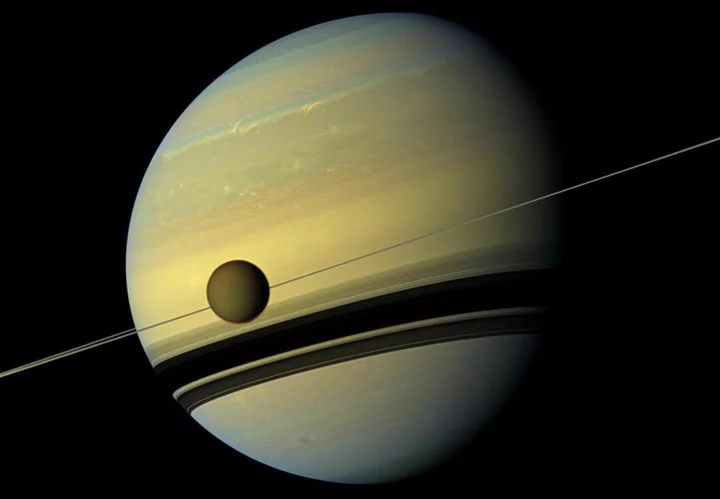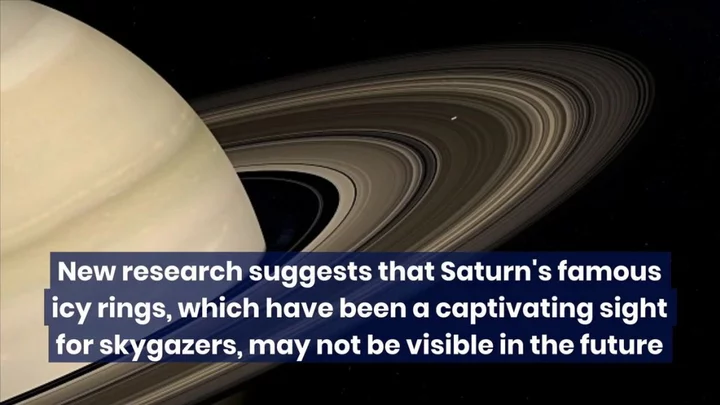Jupiter briefly stole the limelight in February when new research revealed the planet had so many more moons than once thought, it was the new solar system leader.
But Saturn is back, baby.
A group of astronomers has announced the discovery of 62 more moons orbiting the sixth planet from the sun, bringing its total natural satellites up to 145. When confirmed by the International Astronomical Union's Minor Planet Center, the new tally should make Saturn the first planet in space known to have over 100 moons.
SEE ALSO: Turns out Uranus might be swarmed by deep ocean worldsEdward Ashton, who started the study at the University of British Columbia, used a detection technique that involves stacking photos to capture more details in a single frame. The process helps uncover fainter and smaller cosmic objects. Astronomers have used this method to hunt for moons around Neptune and Uranus, but not for Saturn until now, according to the university. Researchers from other institutions collaborated on the project.
"Tracking these moons makes me recall playing the kid's game Dot-to-Dot,” said Ashton, now a researcher at Taiwan's Academia Sinica Institute of Astronomy and Astrophysics, in a statement. “But with about 100 different games on the same page and you don't know which dot belongs to which puzzle."
The Minor Planet Center, which catalogs moon designations, has published 42 of the new Saturnian moons over the past week or more. It's working to process and confirm the others over the coming week, said Matthew Payne, the center's director, in an email to Mashable on Friday, May 12.
Cassini captured five of Saturn's moons in 2011. A new study puts the latest moon count at 145. Credit: NASA / JPL-Caltech / Space Science InstituteAssuming all candidates from the study receive their designations, that would mean Saturn's moons way outnumber those of other planets in the solar system.
Saturn: 145.
Jupiter: 95. (Apparently, its own tally has ticked up three more moons since the February announcement that it had become the new record holder, according to a NASA list.)
"Tracking these moons makes me recall playing the kid's game Dot-to-Dot. But with about 100 different games on the same page and you don't know which dot belongs to which puzzle." NASA's Cassini spacecraft examines a large crater on one of Saturn's moons, Mimas. Credit: NASA / JPL / Space Science InstituteWant more science and tech news delivered straight to your inbox? Sign up for Mashable's Top Stories newsletter today.
When the Saturn research group took sequential images of a moon as it moved through space, they were able to collect more data to strengthen the moon's signal. That allowed the team, which used the Canada-France-Hawaii Telescope in Hawaii for their observations, to find moons as small as about 1.5 miles wide.
The search began in 2019 when Ashton and collaborator Matthew Beaudoin were students. The objects were tracked for two more years to ensure they weren't just asteroids zipping close to the planet. They and their team also used previous detections that weren't tracked long enough at the time to establish moon orbits.
NASA's Cassini spacecraft examines Prometheus, a potato-shaped moon orbiting Saturn. Credit: NASA / JPL-Caltech / Space Science InstituteThe researchers say many of the new moons are likely remnants of collisions that shattered a bigger moon or moons into pieces. All of the newly found ones are considered "irregular," the researchers said, meaning they have large, tipped, oval-shaped orbits. These moons also tend to cluster based on their tilted orbits.
"As one pushes to the limit of modern telescopes," said Gladman, a UBC astronomy professor and study collaborator, in a statement, "we are finding increasing evidence that a moderate-sized moon orbiting backwards around Saturn was blown apart something like 100 million years ago."









